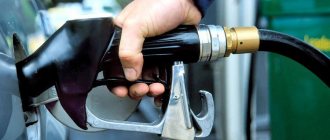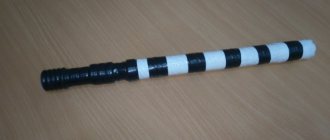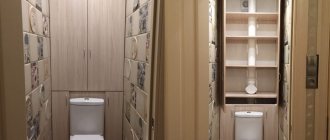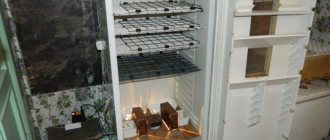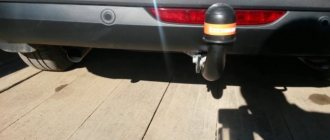SHARE ON SOCIAL NETWORKS
FacebookTwitterOkGoogle+PinterestVk
Caring for a summer cottage, greenhouse, flower bed or lawn takes a lot of effort and time. To maximize labor optimization, you can organize automatic watering yourself, choosing the necessary irrigation system. The automatic system involves uniform and regular watering, which reduces water consumption, increases productivity and improves the appearance of plants. How to organize it correctly, depending on the selected type, is described in this article.
Installing an automatic irrigation system will allow you to irrigate the site on a schedule without additional user intervention
Features of an automatic watering system at the dacha
Automatic watering of a site is a special technical complex that ensures uniform and regular water supply to plants in a certain area. The system can be classified as landscape irrigation. It consists of hoses, sprinklers, taps, a pump, various valves and a controller that operates based on a programmed program. Automatic watering works according to the schedule entered into the control program.
Atopirrigation systems can be used for all types of plantings
The so-called “smart rain” system is often used in winter gardens, parks, greenhouses, and industrial greenhouses. It is also installed on a summer cottage of any size, thanks to which you can control the watering of the vegetable garden, lawn, garden and flower beds.
Among the main advantages of a do-it-yourself automatic watering system at the dacha are the following:
- ease of operation;
- no need to independently water plants in a summer cottage or greenhouse;
- the ability to set the required intensity and frequency of watering;
- automatic watering reacts sharply to environmental humidity, so the system will automatically turn off during rain, which will save water;
- the ability to install the system to operate by the hour and in a specific area of the garden or greenhouse;
- durability.
There are three types of automatic irrigation systems: sprinkling, drip irrigation and subsoil irrigation - each option has distinctive features and is selected based on the nature of the site and the types of green spaces.
Installing an automatic watering system on the site will save owners a lot of time and effort spent on watering plants independently.
Controller and timer for automatic watering system for garden
Watering can be semi-automated or fully automated. The first option involves installing auto-irrigation timers, which are represented by electrical or electromechanical devices that allow you to set the duration and frequency of irrigation.
Fully automated do-it-yourself watering systems are equipped with a controller. This is the so-called brain of the device, represented by a mini-computer, thanks to which the entire system works. Based on a given program, the controller controls the device, regulates the number of irrigations and pressure intensity, controls the network pressure and water temperature. It has a built-in humidity sensor that is sensitive to rain. If necessary, it automatically turns off the system. The controller can be installed indoors and outdoors.
Important! To organize timely water supply to sprinklers and pipes, an electromagnetic valve is used.
Self-watering can also be used for outdoor potted plants.
Many modern controllers are equipped with GSM modules, thanks to which the system can be controlled from a mobile phone. Timers and controllers have different numbers of channels. To irrigate plants of the same type that have the same watering regime, devices with one channel are sufficient. For different irrigation options, multi-channel devices will be needed.
Helpful advice! You can purchase several simple single-channel devices and connect them to one main line, setting different watering programs.
When choosing an automatic irrigation system, you should pay attention to the type of battery and autonomy of the device. Most devices use several AA batteries or one 9V battery.
First real experience of using a sprinkler.
Leaving on vacation for 21 days, we put all the pots of flowers (except for cacti) on the kitchen table, stuck a dropper in each pot and turned on the machine.
The numbers in the picture indicate:
- Control block.
- Water spill sensor detector (lying on the floor).
- Collector (attached to the central heating pipe).
- A bucket of water covered with plastic wrap (standing on the floor).
- Pump.
Of course, we did this on the last day, or rather, a few hours before departure. It’s no wonder that in my haste I made a lot of mistakes.
Upon returning, we found all the flowers alive, but the soil moisture was not high enough. Moreover, this also applied to the pot in which the soil moisture sensor was located.
Having measured the resistance of the sensor, I found that it corresponded to the resistance that was selected during testing as the threshold. Checking the machine's performance also did not reveal any abnormalities. Simply put, the machine was working correctly, but its setup was wrong.
After analyzing the results, I immediately realized what critical mistakes I had made. Of course, the main mistake was that I did not take into account the recommendations that I myself gave in the article about the humidity sensor.
Namely, during testing and autonomous operation of the machine, the humidity sensor was installed in different pots, while the position of the sensitivity regulator remained unchanged.
In addition, at the end of the testing period, I reduced the amount of water dispensed by the pump per cycle, since there were slightly fewer pots than I thought and the two most voracious plants were able to receive two droppers each. As the volume of water decreased, it became insufficient to uniformly saturate the entire soil, but since the humidity sensor was located right at the epicenter of irrigation, it began to give underestimated readings.
But, as they say, every cloud has a silver lining. The last experiment led me to a somewhat paradoxical thought. It is possible that the use of individual soil moisture sensors for each pot with the corresponding allocation of a certain amount of water for each plant will not simplify the setup of the entire system, but, on the contrary, will complicate it so much that this setup may take too much time.
Perhaps the use of individual standardized induction-type sensors could solve this problem, but this is clearly beyond the scope of budget solutions, since one such sensor can cost more than $100.
Return to top to menu.
Filters and water tank for organizing automatic watering
Any irrigation system begins with a water supply source. In most cases, when organizing an automated irrigation system at your dacha with your own hands, a metal or plastic container for water of different volumes is used. Directly connecting the system to a centralized water supply is undesirable, since it may contain too cold water, which can harm the plants. The presence of an intermediate container will allow the water to warm up to air temperature. In addition, the tank acts as a reserve tank, which is useful in case of a water outage.
Automatic drip irrigation systems are convenient for seedlings and flowers in pots
Helpful advice! To organize drip irrigation, it is recommended to install the container on a small hill, which will create sufficient pressure in the system for its operation.
The water supply to the tank should be from above, which will make it possible to fill the container to the top. The water intake will be placed at its lowest point, but not at the very bottom, as this will allow accumulated debris to enter the system. But for possible cleaning of the container, a tap designed to drain water should be located at the bottom of the product.
Helpful advice! You can organize the flow of rainwater from the roofs and the territory of the house into a container, which will provide a free source of water supply.
In order for the system to serve for many years without significant breakdowns, a filter should be installed at the beginning. It will protect the automatic watering system from various small debris, which is often found in the water, which is detrimental to the system. Filters can be mesh, disk or bulk. The first option is preferable for systems in which the water source is a water-measuring tank located at a certain height.
Using automatic watering in greenhouses is a very effective solution
The latter type is used to organize irrigation systems for fields and large-area greenhouses and vegetable gardens. The disc filter has the best performance characteristics, but it has the highest cost. Regardless of the chosen option, the element must be immediately installed on the main line leaving the storage water metering tank.
Choosing a water supply source
We provide instructions for installing two irrigation systems: a large-scale automatic one using a programmable controller and a modest non-automated one based on a barrel.
Before proceeding with the arrangement of any of the two systems under consideration, you need to select a water source and pumping equipment suitable for a particular situation. Water can be taken from:
- main water supply. The most convenient option. If your home is equipped with its own water supply, it is enough to simply cut the main pipe of the irrigation system into it. In most situations, no pumps need to be installed;
- wells. Installation of a submersible or surface (depending on the depth of the source) pump is required;
Well pump - well. The system includes a surface or submersible pump;
Surface pump - barrels or other container for water. Installing a pump is usually not necessary;
- natural source (river, lake, pond, etc.). The type of pump and its power are selected in accordance with the conditions of a particular situation.
Find out which pump to choose for watering your garden, and also consider the types and installation process in our article.
Electric water pump prices
Electric water pumps
Table. Pump Malysh, used for pumping water from open reservoirs, wells and wells. Characteristics
| Pump Baby, characteristics | Indicators |
| Pump type | Household vibrating submersible |
| Current consumption | 3 A |
| Power | 165 W |
| Water intake | Lower |
| Pressure | 40 m |
| Performance | 432 l/min |
| Length of cable | 10-40 m |
| Continuous operation | No more than 12 hours at a time |
| The need to turn off the power for 15-20 minutes | Every 2 hours |
| Connection | To flexible hose |
Selecting a pumping unit for automatic watering
If the water supply is not from a centralized water supply, but from a well or reservoir, the system should be equipped with a pump for automatic watering, designed for a certain flow rate. The device will provide the required pressure in the pipes, which will activate the sprinkler nozzles.
When choosing a pumping unit, you should pay attention to the following parameters:
- power, which is selected based on the area of the territory for irrigation;
- water consumption required for watering all green spaces, with a reserve power reserve;
- probability of automatic control;
- resistance of the mechanical elements of the unit to the effects of chemical compounds in the form of fertilizers, which will be introduced into the water as needed;
- level of vibration and noise generated;
- presence of a “soft start” system;
- ease of installation and dismantling.
If water is drawn from a reservoir or container, then it is advisable to buy a pumping unit to install an automatic watering system
For organizing drip irrigation, the most suitable option is a centrifugal pump unit. More reliable and expensive is the blade type, which can have a vertical or horizontal wheel arrangement. This type of pump is used for sprinkling. If the water flow exceeds 2 l/s, it is better to install a piston centrifugal unit.
For large areas, when creating automatic sprinkling, it is recommended to give preference to an axial pump. For drip irrigation of a large area, it is advisable to install a vortex unit.
Selection of pipelines for organizing an automated irrigation system at the dacha
Pipes are used to ensure the movement of water from the reservoir to its destination. They are connected to the main water supply. Elements are laid separately for each section and connected to valves and sprinklers.
Pipelines can be metal or plastic. The first option is characterized by high strength and performance characteristics. However, metal products are prone to corrosion, which reduces their service life. Also characteristic of the material is labor-intensive installation, which requires certain skills and abilities.
Plastic pipes are the highest quality and therefore suitable for automatic watering systems.
A more practical option for installing an automatic watering system with your own hands is considered to be plastic products. The material has a smooth inner surface, eliminating the possibility of deposit accumulation, thereby reducing the throughput of pipelines. Polyethylene pipes are resistant to temperature fluctuations, aggressive substances and solar radiation. Such a strong and durable material can be laid underground and on its surface.
Installation of individual elements is carried out using soldering or fittings. The cost of products is 40-80 rubles/m. Among well-known manufacturers, preference should be given to the companies Wavin, Rehau and Ostendorf.
More economical, but no less reliable, are pipelines made of polypropylene. The products are distinguished by good strength characteristics and long service life. These pipes should be purchased from such well-known manufacturers as Aquatherm, Rehau, Wefatherm, Banninger, Ekoplastik, Pro Aqua, Valtek, Santrade, at a price of 30-50 rubles/m.
Polypropylene pipes are not inferior in quality to plastic ones, but they are inferior in price
Small details.
- An approximate calculation of the response time of a timer assembled on a CMOS chip can be done in your head.
t = 0.7CR t – time in seconds, C – capacitance in microfarads, R – resistance in megohms. The time also depends on the amount of capacitor leakage. If you need to use large capacitors, it is better to choose tantalum rather than conventional electrolytic capacitors. If you are using a printed circuit board made of fiberglass, and you do not live in the tropics, then you can use resistors up to 100 megohms. However, the leakage resistance of some tantalum capacitors can be commensurate with this value.
The minimum resistance of the resistor must be selected based on the maximum permissible output current of the microcircuit - 1 kilo-ohm per 1 volt of supply.
- The amount of water pumped by one or another dripper depends on the number of air pockets remaining from the last cycle and may differ by 20-30%.
In addition, the amount of pumped water depends on the throughput of the liquid filter and can vary even between drippers from the same manufacturer. Droppers from different batches can be distinguished by the shades of the tubes and other plastic parts. You need to look at it in daylight. - In this design, to configure the machine, a potentiometer R11 with a logarithmic characteristic (B) is used. You can also use a potentiometer with an inverse logarithmic characteristic (B), the one used for volume controls, but then the scale will have to be reversed. That is, the sensitivity of the humidity sensor will increase when the knob is turned counterclockwise.
- The very first start of the machine in offline mode gave a leak. The tube came off the pump fitting. I had to make wire clamps.
Return to top to menu.
Varieties of automatic garden watering schemes
There are several variations of automatic watering schemes that can be seen on the Internet. All of them are mobile and are selected based on the characteristics of the territory and the types of green spaces. The most popular option is a water supply scheme that uses a pumping station. Water from the source is pumped through pipelines and supplied to the plants using sprinklers or in the form of drops. A filter is installed after the pump.
It is possible to provide a unit for applying fertilizers. It consists of a container, an injector and shut-off valves. Such a device will definitely come in handy when organizing an automatic watering system for greenhouses, vegetable gardens and gardens. The solution is supplied into the pipeline using an injector. The number of irrigation lines is determined based on the nature of the plantings and the pressure in the network. The choice of drippers or sprinklers is made by calculating the water flow required for watering the plants.
To organize automatic watering for flowers and lawns, a sprinkler irrigation scheme is acceptable. It can also be used in the country, watering low-growing plants, the height of which is 10-15 cm. In this case, the pipelines are laid underground so as not to create obstacles when mowing the lawn. Sprinklers can also be located in the ground and extend at the beginning of the system. Automatic watering can work without a pump unit. Water is supplied by gravity, which is most often used for drip irrigation.
Automatic drip irrigation scheme for garden
What water to water indoor plants
It is not recommended to use ordinary tap water to moisten the soil, as it most often contains heavy salts. These salts will gradually coat the roots with a coating that will prevent moisture absorption.
You can take water from the tap, but you must first filter it, or better yet, let it sit for at least 24 hours. The settled water will also become the same temperature as the soil.
The optimal water temperature is room temperature.
REFERENCE! Experienced flower growers are sure that it is not worth choosing mineral and distilled water to moisten the substrate.
Once a week you are allowed to water the plants with water from the aquarium. This is no longer just a liquid, but a ready-made organic substrate.
Features of rain automatic irrigation
The rain irrigation option is mainly used for do-it-yourself watering of lawns, strawberry plantations and large areas. Such a system can be installed in greenhouses for crops that love a humid microclimate. During sprinkling, water, which is dispersed by sprinklers, falls under the root and onto the above-ground part of the plant.
Related article:
Do-it-yourself drip irrigation for your dacha at no cost: do it yourself easily and simply How to set up drip irrigation at your dacha yourself using ready-made components or scrap materials. Installation features.
The sprinkler system can be installed by air or subsoil. The latter option is more accurate and durable. It is installed with confidence in the permanent location of green spaces. Sprinklers with nozzles are also located underground. When the pressurized water system starts operating, the sprinkler moves up, supplying water to the area. When organizing a rain automatic watering system for greenhouses, an air method of laying communications is used.
Important! Sprinkling can operate at a water pressure in the pipeline of at least 2 atm.
The system can be connected to a centralized water supply pipeline or take water from a barrel. The last option involves installing a pump, the operation of which is controlled by a controller.
The automatic sprinkling system can be either above-ground or underground type
The main advantages of the system are the following factors:
- promotes gradual uniform absorption of moisture;
- humidifies the air, which is especially important in greenhouses;
- washes leaves and fruits of bushes and trees from dust and insects.
The disadvantages of the sprinkling system include the formation of a crust on the surface of the earth, which prevents the flow of oxygen into the soil. In addition, such automatic watering requires a large consumption of water and electricity. Constantly simulating rain can be detrimental to some crops due to the fact that it contributes to the development of various diseases. However, this is the most rational system for automatic watering of lawns and beds with frequent plantings.
An automatic sprinkler system consists of a pump, hoses and special spray nozzles that spray water around within a certain radius. Sprinklers for watering a garden can be fan or rotary. The first option is suitable for a small area. The operating radius of such sprinklers is up to 5 m. Fan sprinklers can be equipped with different nozzles, thanks to which the irrigation sector is regulated.
Schemes for automatic sprinkling of greenhouses controlled by a controller
To moisten large areas, it is better to choose rotary sprinklers, which, dynamically rotating around their axis, spray water over long distances - up to 10 m. For root irrigation, the system can be equipped with bubblers. You should not install different types of sprinklers in the same area, as they provide different watering rates.
Helpful advice! To irrigate roadside lawns, a do-it-yourself irrigation system is equipped with fan sprinklers that operate in one direction.
Preparatory stage before installing an automated sprinkler system
Before making automatic watering, you should draw a detailed plan showing all buildings, garden paths, beds and green spaces. The area is divided into zones and sprinkler locations are marked. To install on corners, sprinklers must have a watering radius of 90°, and over the entire area - 360°.
Helpful advice! Sprinklers are located in such a way that the intersection of the radii of the installation coatings is ensured.
Sprinklers must be selected and installed based on the capacity of the pipes and the size of the area
Next, the pipeline system is drawn, and the installation location of the pump relative to the selected irrigation source is indicated. When determining the number of sprinklers, one should take into account the fact that the location of the device itself provides the least amount of water. Most of it ends up on the ground far from the equipment.
The next step is to determine the required pipe diameter. Based on experience, many experts recommend laying pipes with a diameter of 40 mm and a throughput capacity of 50 l/min on a plot of 1 hectare.
It is recommended to install a do-it-yourself automatic lawn watering system in the fall so that you can admire the green plantation in the spring. To lay main and outlet pipes underground, you should dig a trench 30-40 cm deep if the ground will not be plowed here in the future. Otherwise, the depth must be at least 50 cm. A cushion of crushed stone is placed at the bottom of the trench, which will act as drainage. If an aerial installation option is envisaged, then it is necessary to prepare supports and fasteners for installation to the roof.
When installing the system, it is important to monitor the level of the pipes
Important! When organizing automatic watering in a greenhouse with your own hands, it is imperative to provide a compensation loop, which is necessary in case of bends and linear changes in the size of the hoses at different temperatures.
Do-it-yourself rain watering: sequence of actions
Installation of automatic irrigation begins with laying the main pipes. At branching points, the pipe is cut off and a tee is installed to connect a hose that will drain water to the sprinkler. An articulated elbow must be attached to the end of this branch, which will allow the height of the sprinkler to be adjusted. All sections of the system are installed in a similar manner.
The next step is to install the nozzles in the sprinklers. To do this, unscrew the glass, remove the top part, compress the spring on the sprinkler and insert the nozzle into the special hole. It must be lightly pressed so that it enters the sprinkler itself. To check the correct location of the nozzle, you need to release the spring. If the element rises to the very top, it means it is installed correctly. Next, you need to tighten the injector screw clockwise with a special wrench.
Sprinklers can be adjusted to spray only the area needed
Now you can attach the sprinklers to the hinged elbows. Then the trenches should be buried, leaving the locations of the sprinklers. Sprinklers must be level with the ground using the hinged elbow control. Next, the sprinklers are installed. The earth around the elements must be thoroughly compacted.
Important! The top of the sprinkler should be located no higher than the bottom level line, which is located on the ground.
Then the solenoid valve is installed in the direction of fluid movement, as indicated by a special arrow on the device body. A pipeline is connected from the valve to the water supply system or pumping station. A software controller is installed, thanks to which you can automate the system by setting its operation to a specific mode. The entire system is checked for functionality.
Scheme for installing automatic lawn watering on the site
Drip irrigation as a type of automatic watering system at the dacha
Drip watering for gardening and vegetable gardens is the most popular type of irrigation today. It is advisable to arrange it in small areas with parallel planting of plants. This is the most economical irrigation option, since water is supplied to garden crops by drip. It is advisable to arrange such automatic watering at low pressure in the irrigation system.
A storage tank with water located at a certain height is used as a source of water supply. A main pipeline is connected to the tank, which carries water to distribution hoses laid parallel to each other. Do-it-yourself automatic drip irrigation is used for berries and garden crops, shrubs, trees and flowers. Such a system is often equipped in small greenhouses, flower beds and vegetable gardens.
Today it is possible to buy a ready-made kit, which necessarily includes a timer, sensor, pressure gauge and thermometer, or you can also complete the system yourself. To do this, you will need a main pipeline with a diameter of ¾ or 1 inch and hoses with thin walls, in the structure of which mini-holes are made. For these purposes, it is recommended to purchase an oozing type of element. Hoses are laid along each row with crops on the soil surface. You should also stock up on a mesh filter and a timer or controller for automatic watering.
Drip irrigation is usually used to moisten the root zones of the plant.
The design of an automatic irrigation system is based on a previously developed scheme. At the first stage, a pipeline is laid with a slight downward slope for subsequent cleaning and draining of the system for the winter. Using fittings, parallel branches are made. The ends of the hoses must be closed with plugs.
Helpful advice! It is recommended to place hoses and pipes on the surface of the ground on special supports or pegs.
As a source of water supply for drip irrigation, a container of a certain volume is used, which is selected based on the number of green spaces. A filter is installed at the outlet of the tank, then a controller or timer. Next, the main pipeline is connected. After installation of the system is completed, it is tested. Then you should set the timer or controller to the required frequency and duration of watering.
To distribute water, a main pipe is connected to the tank, from which there are branches to watering points
Colorful cones
Original sprinklers were invented by domestic manufacturers - multi-colored cones that are filled with water, inserted into a thin stem and stuck into the ground.
As the soil in the pot dries, oxygen penetrates the stem, pushing out of the flask exactly as much water as the flower needs .
Ideal for watering house plants, as well as greenhouses, gardens, etc. This method has its advantages:
- practicality and originality of the solution;
- additional interior decoration;
- no threads, droppers, complex designs - everything is beautiful and simple.
Organization of subsoil watering for the garden
Subsoil irrigation system is used in small summer cottages. It is also advisable to arrange it for greenhouses. This is a fairly economical option that does not require high water pressure in the system and can work safely due to the difference in height between two communicating tanks. Underground root irrigation ensures minimal water loss and prevents evaporation.
The disadvantage of a do-it-yourself subsurface irrigation system is the likelihood of rapid clogging and labor-intensive installation. On a planted plantation, it is problematic to arrange intra-root automatic watering, since the root system of green spaces can be damaged.
This type of watering is convenient for perennial plants that need constant moisture. Water at a comfortable temperature reaches the roots slowly and evenly, which helps to constantly maintain moisture in the soil.
The controller allows you to set the time, strength and frequency of watering
Installation of the system is carried out similarly to the above automatic watering options. Here you will need a plastic or metal pipe for the main pipeline, a perforated hose for branches, a pump, a controller and a filter. The pipes are laid in a pre-prepared trench with plastic film laid at the bottom.
A pump is connected to the storage tank. Next, the filter and controller are installed, and the main pipeline is connected. Do-it-yourself automation of a garden watering system involves turning on and off the pump unit at a certain time. The following parameters are optimal for subsoil irrigation: pressure – 0.3 m, water speed – 0.2 l/s. 3-4 days after starting the system, it is necessary to dig up the soil in several places and check the degree of its moisture.
Which is better to buy automatic watering for greenhouses: review of popular kits
Those who do not want to independently select elements for an irrigation system can buy ready-made automatic watering. One of the most popular options for drip irrigation is the Aquadusya system. It is designed for an area of up to 5 m². The maximum watering time is 1 hour.
Automatic watering systems have sensors that measure humidity and therefore turn off when it rains
The kit includes hoses, drippers and a controller that runs on regular batteries. Using Aquadusi you can organize watering for 50 plants. The system is easy to use and can be installed independently, without the involvement of specialists, which is carried out on the basis of detailed instructions included with the product. The service life of the automatic watering system is at least 5 years. You can purchase the system for 5,400 rubles.
Another popular model of automatic watering for greenhouses, which can be purchased for 6,500 rubles, is the “Beetle” kit. The name of the root drip system comes from the appearance of the hose arrangement, which resembles an insect. The model is characterized by a simple design that can be assembled even by a novice master. The system is designed to water 60 plants on an area of 18 m². But there is also a greenhouse option, designed for 30 plants on an area of 6 m².
Helpful advice! The system can be expanded by additionally purchasing irrigation lines at the store.
Installation and connection of a drip irrigation system from a Zhuk tank
Automatic watering "Zhuk" consists of main pipelines and small branches, located in pairs opposite each other, at the ends of which there are sinusoidal droppers, which prevents their clogging. The kit may not include a timer, which requires additional purchase of the device. The system is equipped with a filter that automatically purifies water from mechanical impurities. Automatic watering is connected to a tap of the centralized water supply network or to a water meter barrel, which is usually located at a height of up to 4 m. Watering can last up to 2 hours with an interval of 1 to 160 hours.



